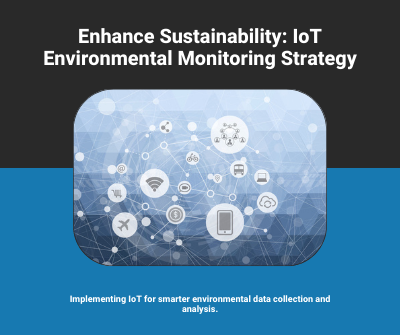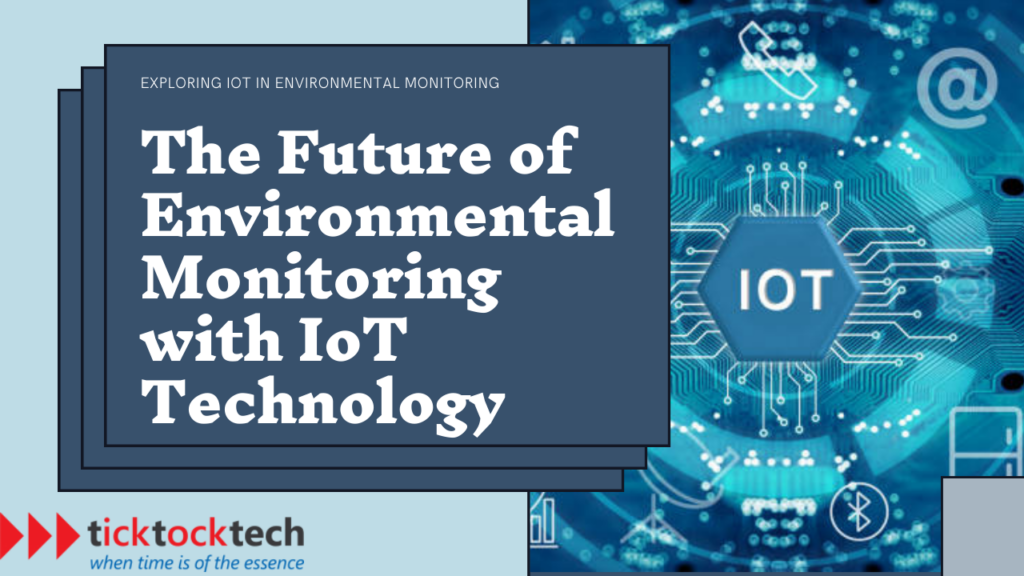Environmental sustainability is on a high list of methods of reducing drastically climate change and global warming issues. One of the key environmental sustainability practices is the recycling of waste and renewable energy. Especially in the industries contributing a large percentage of the climate change issues. These practices have been effectively put in place in some aspects, but not at large. The goal is to bring down drastically, the circulation of the greenhouse gases that lead to the global warming. The more greenhouses in the atmosphere, the more heat and the cycle goes, All technology including the Internet of Things (IoT) has been put to use in battling environmental crises.
The Internet of Things works simply by using sensors to collect data. Data collected is then shared using cloud computing, to an integrated software. The software will analyze the data, and transmit it to the users, either on an a app, or website. IoT collects, and analyzes data, then transmits it to the user in such a way that a regulation can be done in reaction to the data.
So, how does this IoT stuff help with environmental sustainability? Well, let me start by, the world will not stop industrializing anytime soon, The best approach is to set a standard, and monitor the standard, which is simply Environmental Monitoring. IoT will be very applicable, and useful in the case of automated environmental monitoring, and here’s all you need to know about it.
What is Environmental Monitoring?
Environmental monitoring is the process of systematically observing and recording the state of the environment to evaluate its quality and detect changes. This practice is critical because it helps track the effects of human activities on natural habitats while also ensuring that environmental laws and safety regulations are followed.
Environmental monitoring aims to protect both the natural world and human health. Organizations can identify potential risks and mitigate them by gathering data on various environmental parameters, such as air and water quality. This ongoing process helps to develop and implement environmental policies and strategies.
Organizations develop specific programs for effective environmental monitoring. These programs describe the elements they will monitor, the main goals, the methods for collecting samples, and the timelines for each project in the strategy.
Advanced technologies and automated systems are increasingly important in improving the accuracy and cost-effectiveness of these monitoring efforts. For example, Environmental Data Management Systems (EDMS) is important in centralizing data management, enabling automated alerts, and ensuring compliance through quality control.
As industrial activity and energy consumption increase, so do environmental challenges. The demand for precise and efficient monitoring systems is also increasing.
How Does IoT Work?
The Internet of Things (IoT) is a system where smart devices connect to the internet to exchange data. These devices, equipped with sensors and processors, collect information from their environment and communicate it through an IoT gateway or the internet.
The data is then processed by an IoT application that uses artificial intelligence to analyze the information and make decisions. These decisions are sent back to the devices to act upon.
Users can interact with these devices via apps or websites, allowing them to control and monitor the devices’ functions. In essence, IoT enables devices to operate semi-autonomously and intelligently, enhancing their functionality and usefulness in daily tasks.
What is the IoT Environmental Monitoring Strategy?
An IoT-based environmental monitoring strategy uses interconnected sensors and devices to continuously collect and analyze data from the environment.
This method entails embedding sensors in a variety of locations, including weather stations, bodies of water, and industrial sites, to detect temperature, moisture, and water quality. These sensors transmit data via wireless networks, with edge computing enabling initial processing close to the source.

This setup reduces latency and allows for faster responses to environmental changes. Data is then sent to cloud-based systems for further analysis with machine learning algorithms.
This comprehensive analysis can forecast changes, identify hazards, and aid in proactive environmental management. This strategy improves monitoring accuracy and efficiency by reducing human intervention, especially in remote or hazardous areas. This makes it essential for long-term environmental management and disaster prevention.
8 Application of the Internet of Things in Environmental Monitoring
The Internet of Things (IoT) is revolutionizing environmental sustainability across various sectors. Here’s how IoT contributes technically and practically to each area:
1. Air Pollution
IoT devices monitor air quality by measuring levels of pollutants like carbon monoxide and methane. These sensors provide real-time data to authorities and industries, helping them identify pollution sources quickly and enforce regulations effectively. This real-time monitoring enables timely responses to air quality deterioration, significantly reducing environmental health risks.
2. Water Safety
Sensors deployed in water treatment facilities measure contaminants, pH levels, and other critical water quality indicators. This technology allows for immediate detection of anomalies. Ensuring that water safety standards are maintained and that any issues are addressed before the water reaches consumers.
3. Energy Monitoring
IoT is instrumental in energy conservation, using sensors and smart meters to track energy usage across various sectors, from residential to industrial. This data helps in optimizing energy consumption, reducing reliance on fossil fuels, and promoting the use of renewable energy sources. Smart grids, enhanced by IoT, balance supply and demand more efficiently, contributing to a more sustainable energy landscape.
4. Smarter and Environmentally Friendly Farming:
Often referred to as smart farming, involves the use of sensors to monitor soil moisture, nutrient levels, and weather conditions. This data-driven approach enables farmers to use water, fertilizers, and pesticides more efficiently, reducing waste and environmental impact while increasing crop yields.
5. Environmental Conservation
Drones and remote sensors collect data on animal populations and environmental changes, such as deforestation or coral reef deterioration. This information is vital for conservation efforts, allowing for targeted actions to protect and restore ecosystems.

6. Toxic Gas Detection
IoT sensors detect the presence of harmful gases such as H2S or CO. These systems can trigger alarms, shut down operations, or activate ventilation systems to prevent health hazards and environmental damage. This capability is crucial for maintaining safe air quality in and around industrial facilities.
7. Manufacturing Industry
IoT technologies in manufacturing help monitor and reduce emissions and waste. Sensors track everything from energy usage to emissions levels, enabling factories to optimize processes and reduce environmental impacts. Real-time data collection helps companies adhere to environmental regulations more effectively.
8. Waste Management
IoT enhances waste management by using sensors in garbage bins to monitor fill levels. This information allows waste collection services to optimize routes and schedules, reducing fuel consumption and carbon emissions associated with waste collection trucks. This smarter approach not only improves efficiency but also reduces the environmental footprint of waste management operations.
How IoT Technology Will Drive Environmental Progress in Industries
IoT technology significantly advances environmental progress in industries by enabling comprehensive, real-time monitoring and analysis of various operational data. This technology equips industries with sensors and devices that collect critical data across expansive deployments.
They include water treatment facilities, air quality monitors, and energy systems. The data gathered is analyzed via dashboards that highlight trends, spikes, and anomalies, eliminating the need for frequent, fuel-consuming site visits.

This efficient use of IoT not only enhances predictive maintenance and resource management but also supports industries in reducing their environmental impact by optimizing processes and decreasing emissions.
Furthermore, the insights provided by IoT are crucial for policymakers in developing informed regulations to safeguard the environment, showcasing IoT’s pivotal role in driving the industry towards sustainable practices and reducing their carbon footprint.
Conclusion: How IoT is Driving Environmental Progress
IoT technology is crucial for enhancing environmental sustainability across various sectors. By enabling precise monitoring and smart management of resources, IoT helps mitigate pollution, enhance energy efficiency, and promote conservation efforts. This technology provides essential data that drives informed decisions, making operations more sustainable and reducing the environmental footprint of industries. Thus, IoT is not just a technological advancement; it’s a pivotal tool in the ongoing quest for a more sustainable and environmentally friendly future.
FAQs
IoT plays a significant role in addressing climate change by enabling the collection and analysis of vast amounts of environmental data. This data helps in making informed decisions that improve resource efficiency, reduce emissions, and enhance the sustainability of various practices across industries.
The top applications of IoT solutions in the environment include monitoring air quality, managing water resources, enhancing energy efficiency through smart grids, optimizing agricultural practices for better resource use, and improving waste management through smarter logistics and recycling processes.
Modern technologies aiding the fight against climate change include IoT, artificial intelligence, and renewable energy technologies such as solar and wind power. These technologies work together to optimize energy use, reduce wastage, and provide critical data for environmental management and policy-making.

